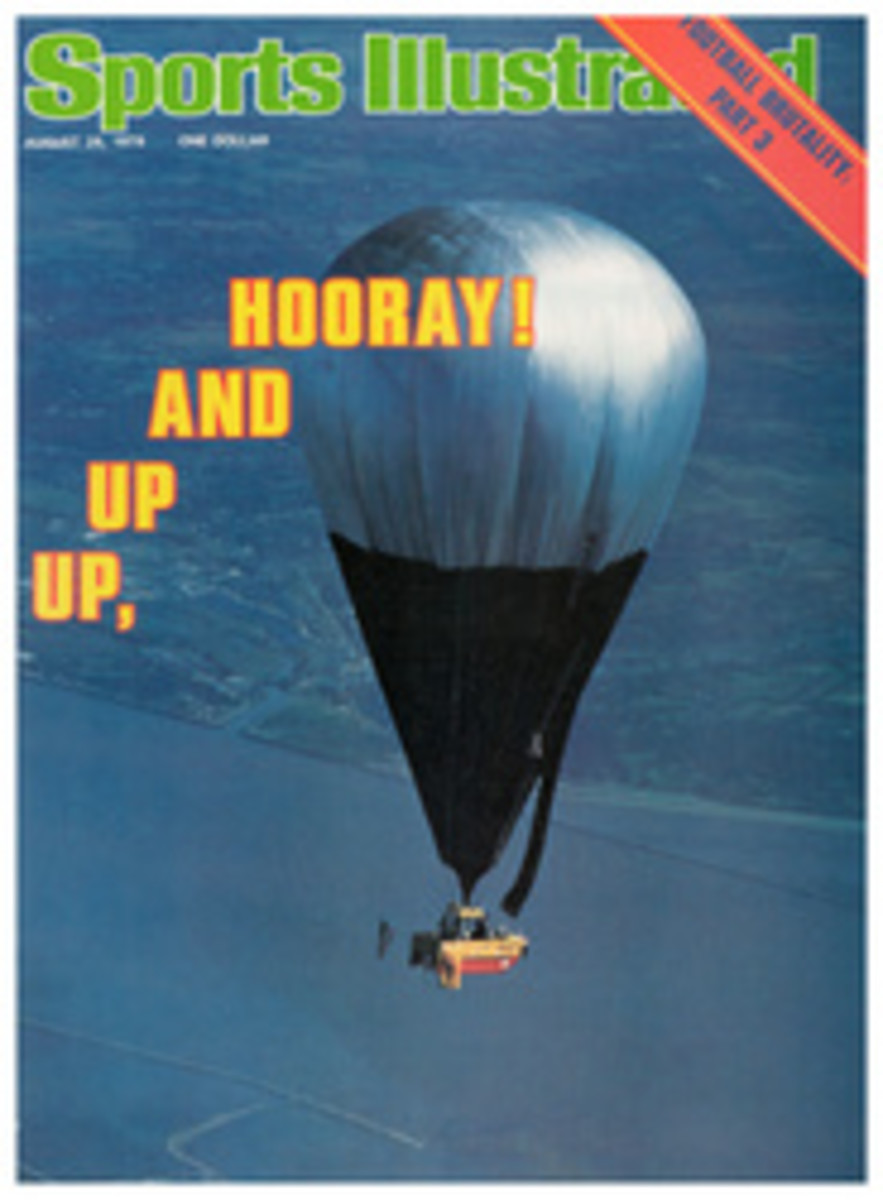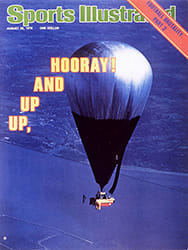
Unruffled at the Biltmore
We think of pool shooters having it out in barrooms, back rooms or maybe dimly lit auditoriums, and yet last week here they were, the world's best, wearing tuxedos and playing under the glittering chandeliers of the Grand Ballroom in the Biltmore Hotel in the heart of New York City. The Professional Pool Players Association had chosen to bring this year's World Open Pocket Billiards Championship into the spotlight. With perhaps pardonable exaggeration, they billed it as a $100,000 tournament. "The whole idea was to draw other than just pool freaks," said PPPA Secretary Pete Margo.
The non-pool freaks that the PPPA hoped to draw were promoters, potential sponsors and television executives who might be moved to improve the future of pool by investing a little cash in the game. What pool needed was a stake horse, as the players would say.
Since its inception in 1976, the PPPA has done a good deal for pool, putting on two world championships in Asbury Park, N.J. and selling four events to ABC's Wide World of Sports and NBC's SportsWorld. Other deals were in the works, but, largely because of pool's shabby image, the game has been unable to attract sponsors for any of its events.
Twenty-five years ago things were different. Pool's stars were tournament players like Willie Mosconi and Andrew Ponzi, gentlemen who wore pinky rings and played the game in tuxes. But after Mosconi retired in 1957, world tournaments vanished and pool went into recession. In 1961 The Hustler was released, with Paul Newman as Fast Eddie Felson, a rascal who slept days, drank nights and lived mainly to hold folks up with his two-piece cue, and a pool boom-let developed. But in the end, not even Newman could help, and an estimated 20,000 poolrooms closed down.
The PPPA thought that glamour—black ties, the Biltmore and a prohibition on the usual after-hours money games—might help. A New York publicity firm was hired to spread the word.
Ads were booked in the newspapers, reporters from the Times and the Post were lured to a press conference at "21" and competitors were lined up for guest spots on Good Morning, America, America Alive, and Midday Live. Then, two days before the tournament opened, the New York dailies went on strike, which killed not only print coverage but local TV time as well, because with the newspapers out, television felt obliged to supply its viewers with gossip columnists, movie critics and Soupy Sales reading the funnies.
The news blackout was especially unfortunate because this year's Open had perhaps the finest field ever assembled, including the winners of every major tournament since 1975. It was also the largest world-tournament field ever, 52 players, one of whom was 19-year-old Jean Balukas, the first woman to qualify for a world tournament. Balukas is a six-time women's U.S. Open champion, but qualified for this event almost by accident. Her father, the owner of a billiard lounge in Brooklyn, lacked one player to fill a 16-man qualifier, so he entered his daughter. She won by defeating Rich Hansen, who had finished a creditable 15th in the 1977 World Open.
In all, 19 PPPA players qualified. The other 33 in the field paid $300 each to enter. They included weekend players such as Ron Jarvis, a New York financial planner who might run a rack of balls if all goes well, but who was happy to pay the money to compete in a genuine world championship. "I'd be here anyway," said Jarvis, chomping on a cigar. "This way I get some action and, besides, the fee isn't that much more than I'd have paid for tickets."
The open entry also turned out to be a lifesaver for quality players who had neglected to qualify. One was Jim Rempe, who has won 35 tournaments since 1971, more by far than anyone. Another was Larry Lisciotti, the 1976 PPPA champ. Both had let their PPPA memberships lapse, and to enter they had to pay an additional $200 initiation fee. Add in the cost of a week at the Biltmore, and they needed to finish eighth or better just to break even. "It's a horrible investment," Lisciotti said. "We'd hate for anybody to steal it though," said Rempe with a wink.
The format was simple: two flights of double elimination, the two survivors to play a 200-ball final. In one flight, Ray Martin of Clifton, N.J. sailed through six games unbeaten, outscoring his opponents 900-254. In his second match against Margo, Martin ran 99 straight in an easy 150-25 romp. "When he's just plink, plink, plinking them in like that," said Margo afterward, "nobody on earth's tougher."
Twelve years ago, at age 31, Martin began playing pool a few nights a week. "Those were hard years," Martin says. "Home at 6, pool from 10 until 3 a.m. and back to work by 7. I hated to get out of bed."
In 1971, using his savings and whatever he could borrow, Martin quit his job as a printer and bought the Clifton Billiard Lounge. That year he beat Irving Crane, Luther Lassiter and Joe Balsis—then the big three of straight pool—to win the World Invitational in Los Angeles. He has been at or near the top of the pool heap ever since.
At the table, Martin generally has trancelike concentration, a silky stroke and classic control of the cue ball. When he is on a long run, players call it "the Martin sleepwalk." He takes pride in playing for nothing more than cab fare, and until two years ago he had never played nine-ball, the gambling game of pool. He is professorial and perfectionist, and has written a book—The 99 Critical Shots in Pool.
By contrast, Allen Hopkins, who emerged from the second flight to face Martin in the finals, hardly ever reads a book. "I prefer doing things," he says. Hopkins grew up shooting pool in Cranford, N.J., parked cars for a while after high school and then took to the road looking for nine-ball games. In 1971 his high school sweetheart, Sandy Geiger, suggested he come on home. "O.K.," he said, "but I'm always going to play pool." Soon after they were married, and from a stash of $15,000 he had picked up on the way home, Hopkins and some partners bought what is now Hopkins Billiard Room in Green Brook, N.J.
Hopkins still travels to play, mostly in the South, and prefers not to talk about it, though he won four nine-ball tournaments in the last few months. Until last year, when he took the PPPA championship, he was not thought of as a power in straight-pool circles. For a world-class player, Hopkins has a jerky stroke and plays angry, slamming down his chalk and often crouching to eye a path for an object ball, squinting his deep-blue eyes like a Western gunslinger. He is known as a rabbit when he is ahead and a bear when behind. "Hopkins will wear you out and grind you down to the bone," said Steve Mizerak, a four-time U.S. Open Pocket Billiard champion who was widely regarded as the man to beat at the Biltmore.
Beat Mizerak twice is what Hopkins did in reaching the final. After being stunned 150-19 by Rempe in the opening round, Hopkins came alive in the losers' bracket, eliminating Rempe before getting to Mizerak for the second time. "I haven't played straight pool since last August," Hopkins said. "There's no action, so why bang heads?"
Saturday night, before a crowd of 900, the biggest of the tournament, Martin and Hopkins started cautiously, but in the seventh inning Hopkins loosened up, running 57 balls for a 94-53 lead. In the 10th he cleaned off two more racks to go ahead 121-57, and had Martin squirming in his seat. But then Hopkins overcut an easy shot at the 6 ball in the side and kicked the floor. For a moment Martin didn't stir. Then he rose from his seat exclaiming, "Oh, I was sleeping."
In his next 15 turns, with both men playing deliberately, Martin inched back into contention, mixing safeties, intentional fouls, small runs and more safeties with a constant stream of chatter to the crowd: "Lord, help me. Got to have a sense of humor. I do something right? Ah, the pressure and the pain." The display, totally uncharacteristic of Martin, had even Hopkins smiling. Behind 153-136, Martin chalked up, pocketed the 7 ball and finished off a rack. He then ran racks two, three and four to reach 192, but a break shot missed the rack and Martin played a safety. Two turns later, the rack of balls loose but not wide open, Martin stroked a length-of-the-table 14 ball in the corner. It missed badly and scattered the rack of balls all over. Hopkins leapt to his feet, needing just 47 balls.
He sank three balls quickly, eyed a difficult one-in-the-corner and pumped the cue ball softly. The 1 ball trickled toward the pocket, grazed the rail, jiggled in the mouth of the pocket and hung on the table.
Martin rose, wiped his hands with a towel and quickly drilled home the last nine balls. Out of the crowd came Ron Jarvis, the weekend player, with a cigar in mouth. He hoisted Martin on his shoulders, getting a king-sized piece of action for his $300. "It's a game of desire," Martin said, "and I desired it and desired it." He took home $4,000, and Hopkins $2,500.
Up in the balcony, a little after 2 a.m. Sunday, Margo was figuring the bottom line. Receipts overall had been $21,500, or about $3,000 shy of the break-even point, but Margo was not unhappy. "We survived," he said. "We're coming back next year."
They're pool players. They'll always survive. Even without a stake horse.
PHOTO

